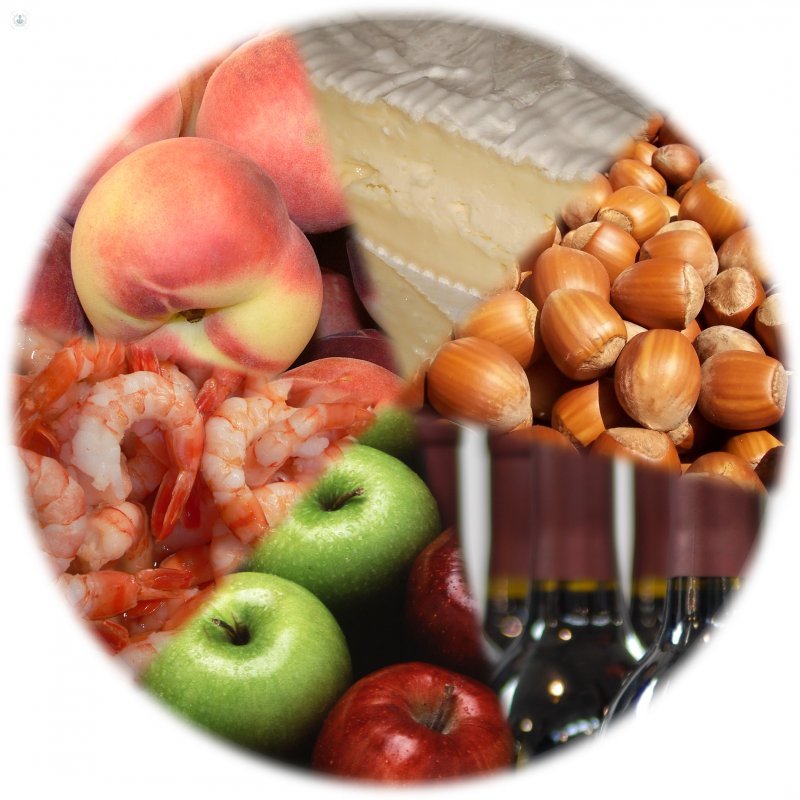Food allergies are related to other diseases
Written by:Food allergies are more common in children than in adults. Affecting approximately 7% of children and 3% of adults. These figures vary if based on simple surveys at street. In this case, 15% of the population claims to suffer from food allergies. However, when tests are performed Allergology to corroborate the% is reduced to those mentioned above.

Most common types of food allergies
- Food allergies in infants: They are, above all, milk protein (not lactose, a sugar and non - allergic cause) and egg. Sometimes they can cause serious reactions with the first shots of bottle or egg. This severity is increased by the fact of being very young children. This is a major concern and anxiety in parents, so the fear of new reactions by accidental ingestion of milk or egg, which are found in many processed foods, such as concern the proper child nutrition. Many of these children outgrow the allergy to the 5 or 6 years, but not all. In these cases you can choose to make a desensitization treatment.
- Severe allergies to fruits or nuts: People suffering from anaphylactic shock boxes or edema of glottis with suffocation after eating these foods. Sometimes the reaction is enhanced by exercising or taking any anti-inflammatory or drink alcohol. These people should know well what they can and can not eat. They should also provide for self-injection of adrenaline in case of accidental ingestion or cross-contamination. That is an elaborate eat food that does not contain the food to which you are allergic in composition, but in its preparation or serving it has been contaminated by said feed accidentally or inadvertently.
- Eosinophilic esophagitis: It 's a minority type of food allergy that manifests as difficulty swallowing, pain and even obstruction of the esophagus. Allergy inflames the esophagus and cause these symptoms.
- Protein enteropathy: Consist of episodes of severe vomiting that occur approximately two hours after eating the food that you are allergic. In children, usually cause milk or fish, shellfish adults (among others). It is difficult to diagnose.
Causes of food allergies
Like other allergies, it is a hypersensitivity reaction mediated by the immune system. It is difficult to know why a particular food appears at a given moment, but always has a first symptom and an initial time. Personal predisposition and other concurrent factors are critical for allergy starts.
As to whether food allergies are hereditary, which is inherited predisposition to allergies, but not really a food allergy. Children of parents with allergic asthma or atopic dermatitis have a greater predisposition to suffer from food allergy.
Food allergies in adults
Increasing cases of food allergies in adults are detected, which occurs for various reasons. Increasing environmental allergies (respiratory) enhances the appearance of food allergies, partly because the pollen that causes rhinitis or asthma shares substances with plant foods (fruits, nuts, seeds, vegetables, cereals ...). Pesticide use power some allergies by altering the composition of fruits or vegetables. The alteration of the intestinal bacterial flora (by the use or misuse of antibiotics or unbalanced diets) or reducing stomach acid (for "abuse" of gastric protectors) are other enhancers food allergy.
Food allergies are related to other allergies such as rhinitis or asthma, in addition to dermatitis or atopic eczema. They are part of a galaxy of interconnected allergic diseases through the immune system. In simple terms, it would be an alteration of "software" which involves a malfunction in some tasks of the "hardware" when he faces substances outside the body.
How food allergies to the lives of people affected?
The main involvement is the possibility of suffering an anaphylactic reaction that may endanger life, especially in people who also have asthma.
Sometimes there may be a nutritional deficit if the person is forced to make a diet very wide avoidance; or in the case of lactic there may be calcium deficit if not supplemented. It is therefore advisable to seek guidance from a nutritionist.
One of the main issues refer to the lifestyle, because the fact of having to avoid certain foods involves difficulties in the diet. Some foods, such as kiwi, are not difficult to avoid. But others such as milk protein or nuts behave changes in routines and difficulties when eating away from home (school, work, social relationships, restaurants, etc.). Some people who have had severe reactions tend to reduce their social life for this reason. Just think of birthday parties for children with serious allergy milk or nuts.


